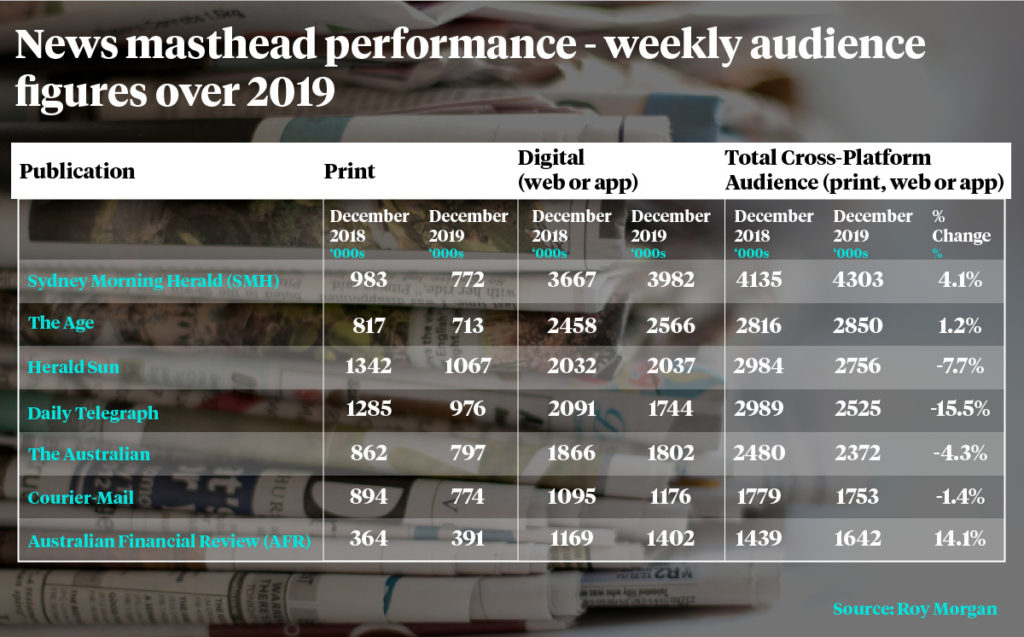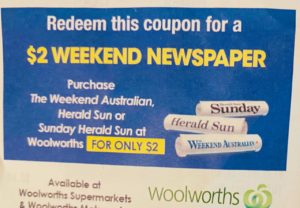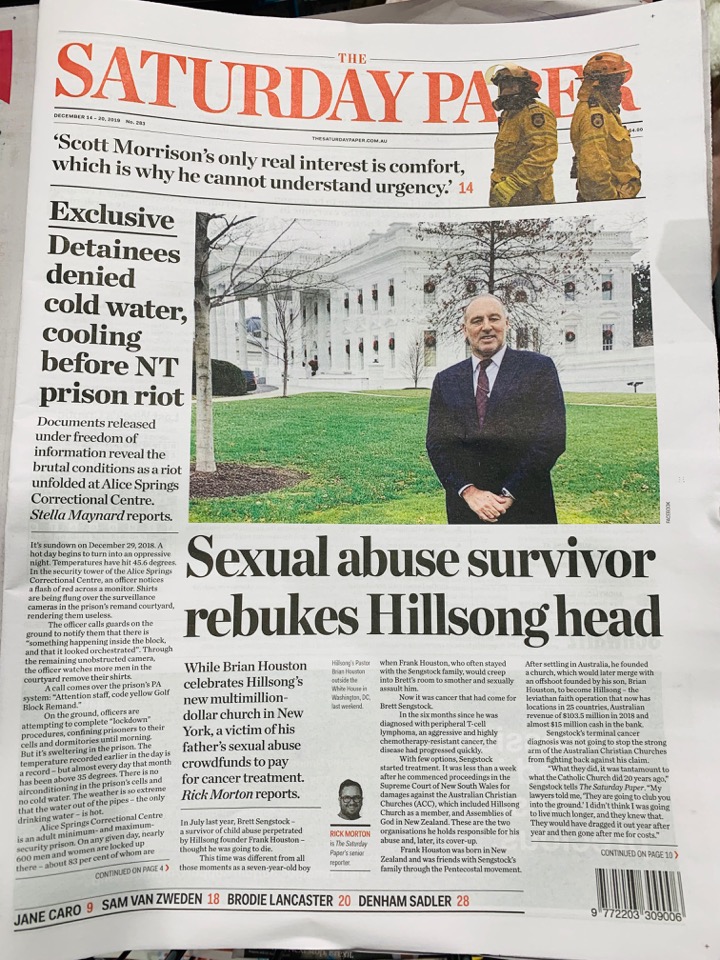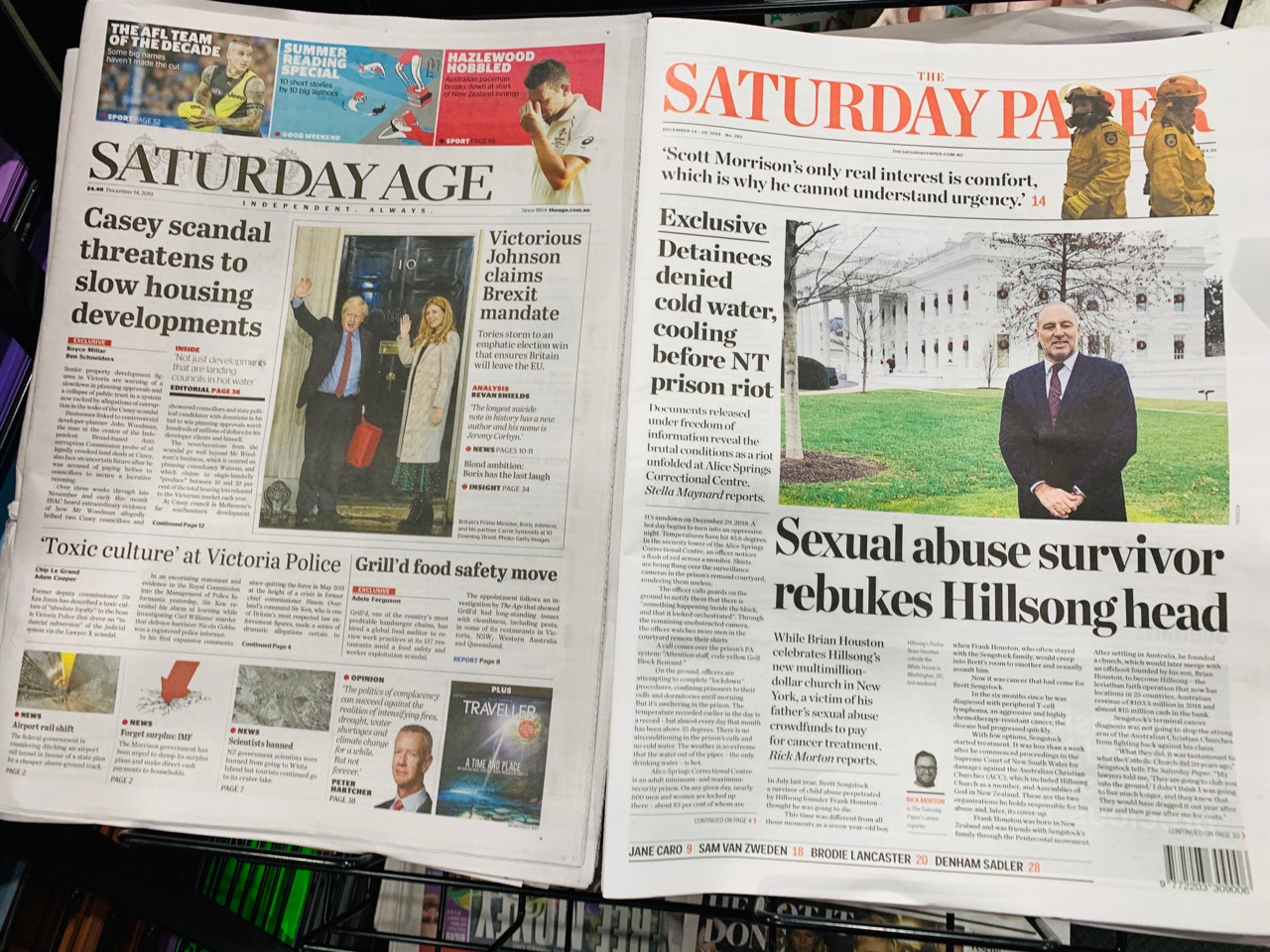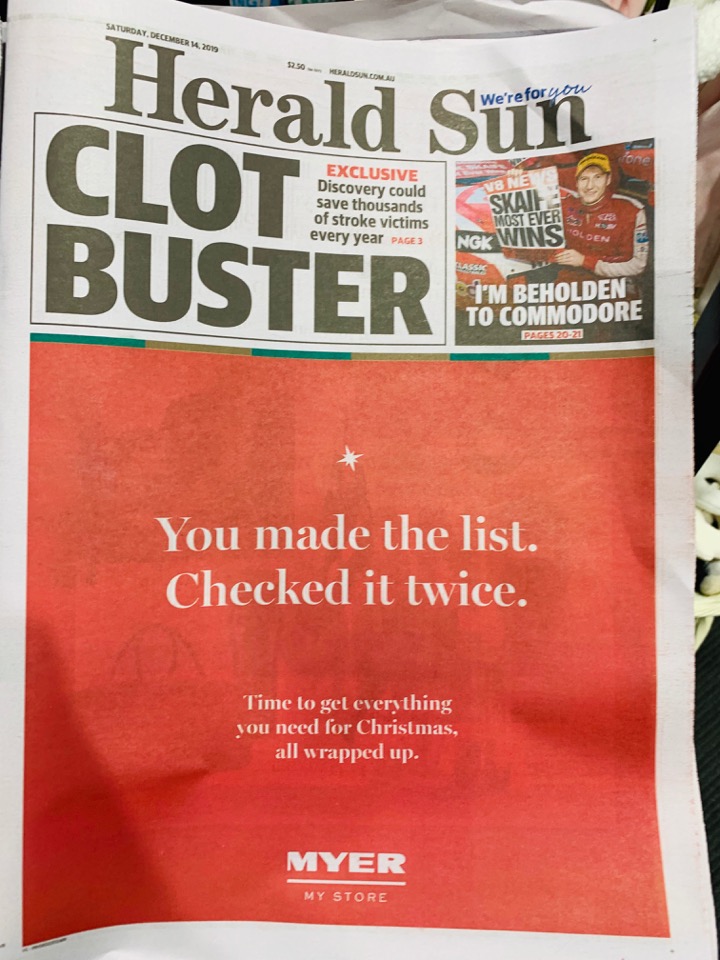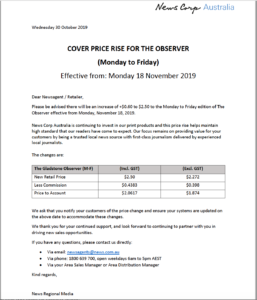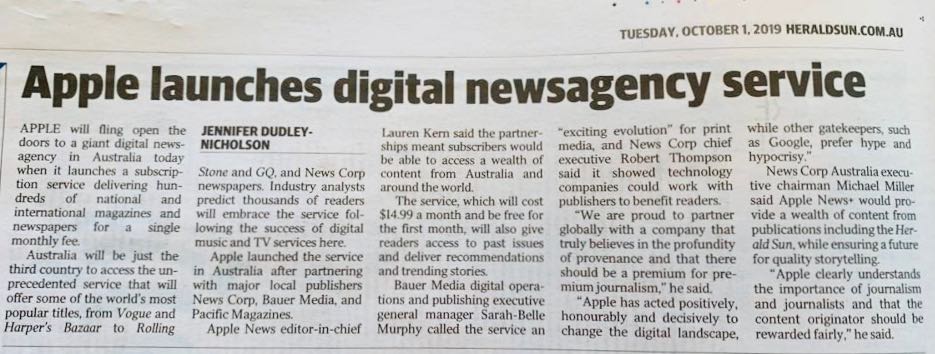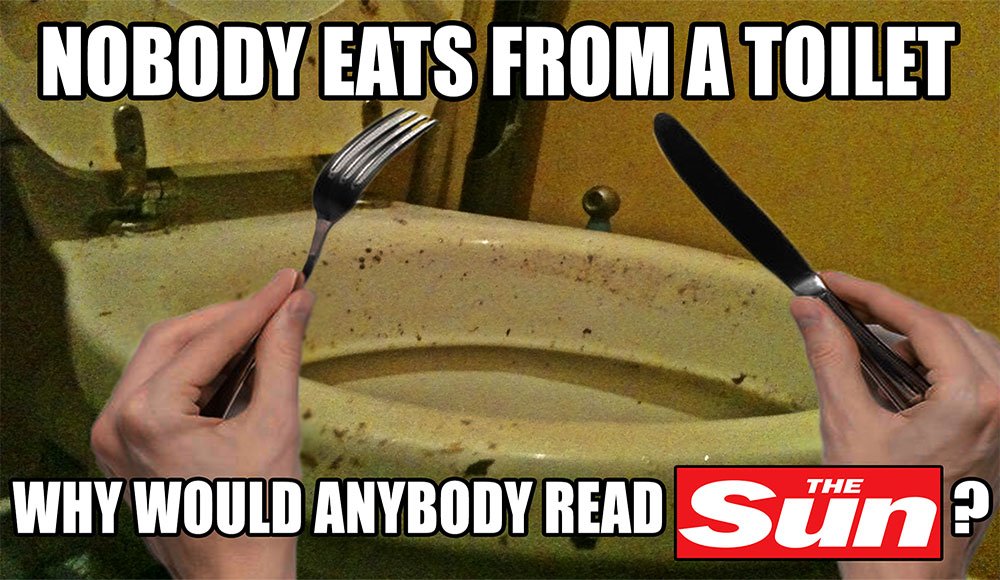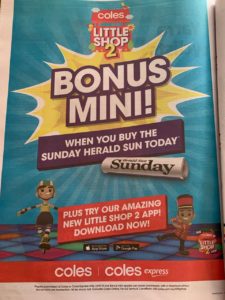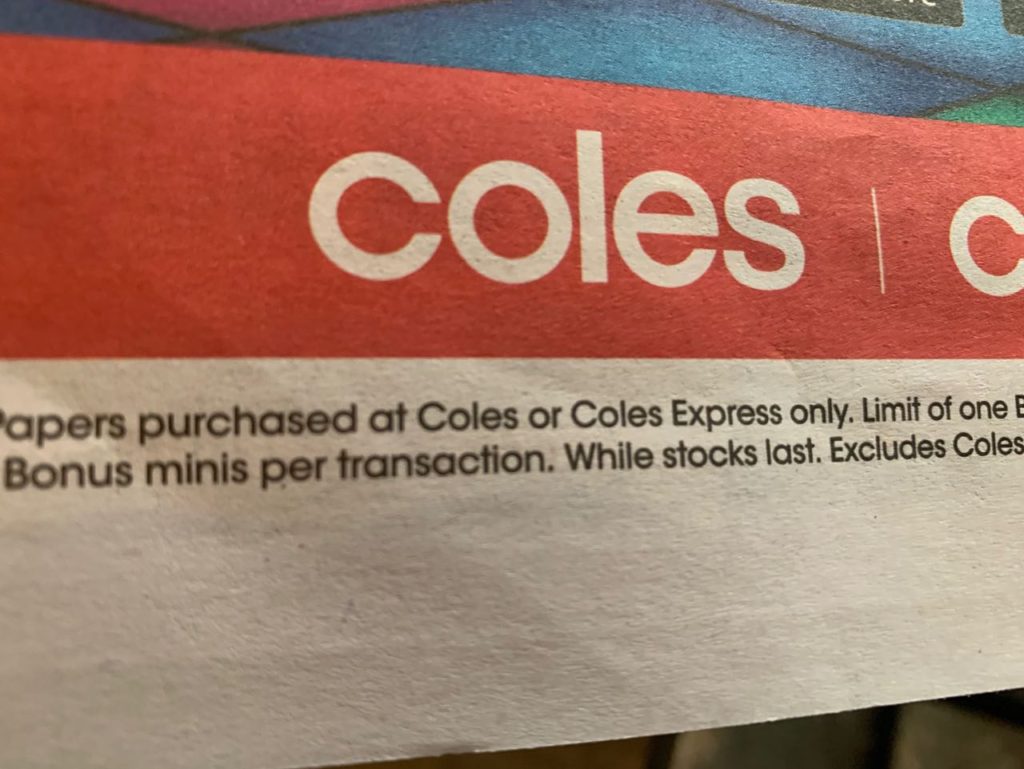Nine (Fairfax) has announced a 20 cent (6%) cover price increase for The Sydney Morning Herald yet only a 1 cent, or 1.6% increase in margin for the retailer. In my opinion, this further downgrade of margin for newsagents is disrespectful and offers retail newsagents encouragement to ditch the product category.
Here is the detail of what Nine has announced.
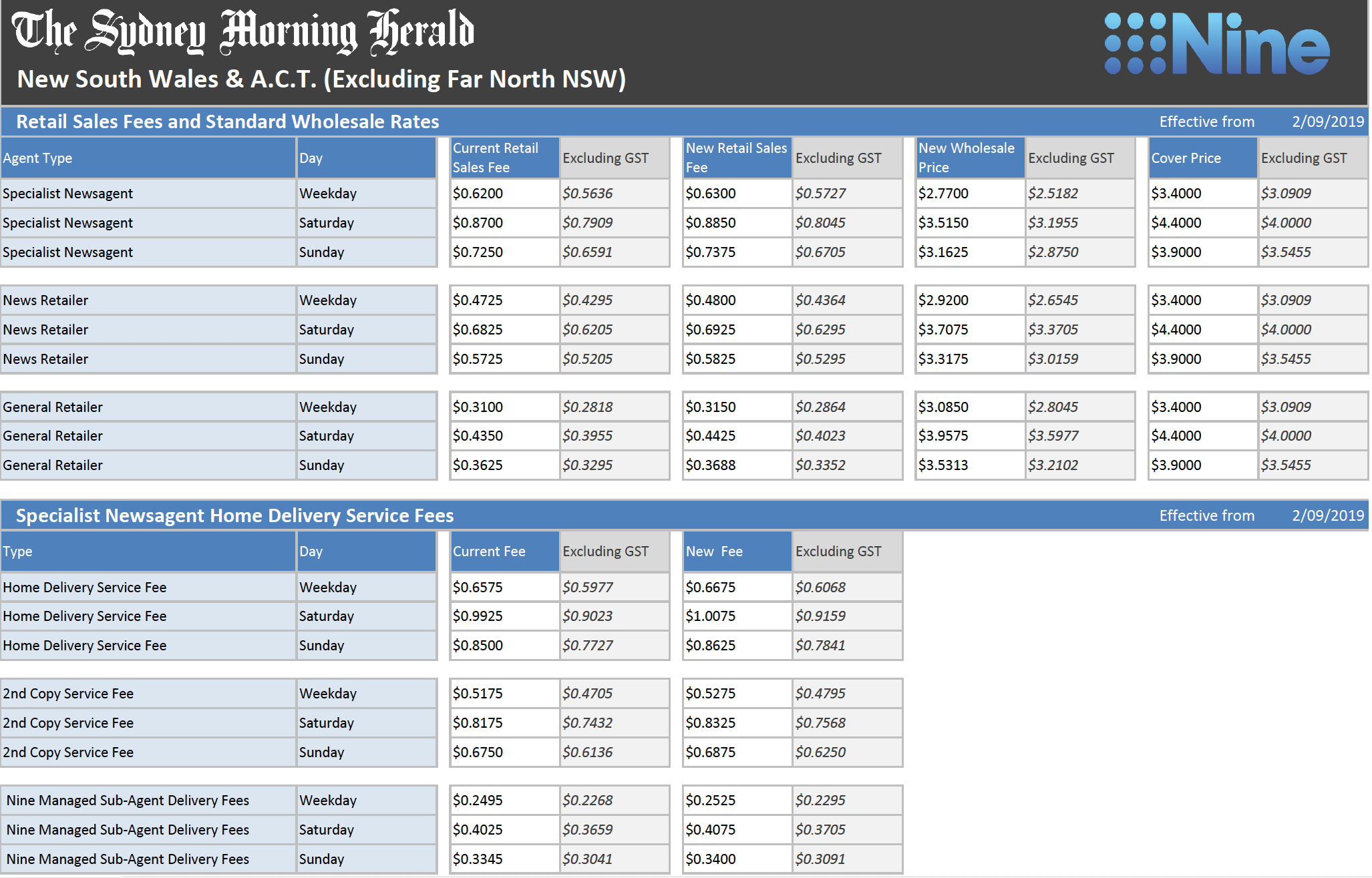
This move offers newsagents an appalling return on the space, labour and capital required to support the sale of newspapers in a newsagency.
I wonder if it is more evidence of a theory that the publishers want to move more retail of their product from newsagents to convenience stores, like 7-Eleven, supermarkets and petrol outlets.
Look at a general retailer. They will get 31.5 cents from a $3.40 item sold. That is 9.26%, down from 9.68% on the current price.
The massive Nine corporation is showing what it thinks of small business newsagents in this move.
What Nine is doing here, in my opinion, is like the federal government move to cut penalty rates. It is shameful, disrespectful and preys on the weak and vulnerable.
The question newsagents have to ask is: Is it worth stocking Fairfax titles or newspapers more broadly? The trajectory of margin is clear. The latest decline in real terms continues the trend.
How much longer will newsagents put up with being screwed over like this? I mean, seriously, how much longer?
Print newspapers, especially dailies, are dying. There is no upside. Newspaper publishers are managing their exit and they are doing this in a way that best suits them. Hence, these moves that disrespect newsagents.
I think the days for accepting their motherhood statements that newsagents are important them are over. If newspaper publishers thought newsagents were important to them they would actually respect them. They are doing the opposite – making more money for themselves while at the same time less for newsagents.
So, the product is dying. It is what it is. I think newsagents need to, for themselves, decide when they will exit the category. They can decide this on their terms, with their timing.
For me, this Nine announcement encourages the decision to quit the category.
Nine will say the papers are losing money and they cannot give newsagents more. Who cares? Not me. I am a newsagent providing a service. Show me some respect or get out.
Oh, and what makes it worse is that newsagents have to pay for shrinkage. One paper stolen will take the sale of nine papers to cover that cost. I suspect supermarkets don’t pay for stolen papers. I suspect they pay only for scanned sales. I say this because I understand some are on this model for magazines.
Footnote: click on the image for a larger version.
